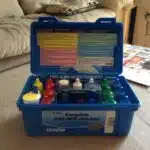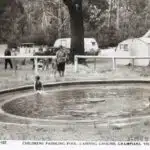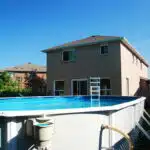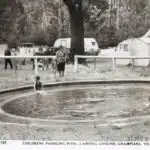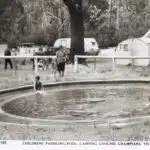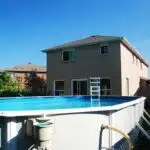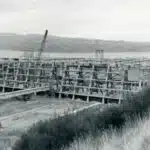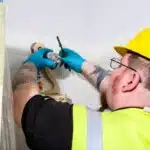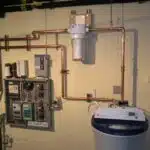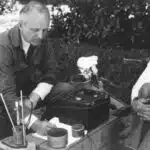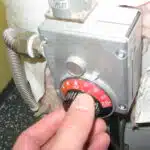Swimming pools are a perfect place to relax and unwind during the summer months, but they require regular maintenance to keep the water clean and safe for swimmers. One important aspect of pool maintenance is shocking the pool, which involves adding a high concentration of chlorine or other chemicals to kill bacteria, algae, and other organic matter that may accumulate in the water. Shocking your pool can help you maintain crystal-clear water and prevent health hazards for swimmers.
In this article, we will guide you through the four easy steps to shock your pool effectively. As a pool maintenance expert with years of experience in this field, I understand how crucial it is to follow specific guidelines when adding chemicals to your pool. By following these steps carefully, you can ensure that your pool stays healthy and sparkling clear all season long. Whether you’re a new pool owner or an experienced one looking for tips on how to maintain your swimming pool’s cleanliness, this article will provide valuable insights into keeping your pool in top condition.
Understanding The Importance Of Pool Maintenance
Maintaining a pool is not an easy task to undertake, but it is necessary for ensuring that the pool remains in good condition. Regular maintenance of the pool has numerous benefits, such as preventing the growth of algae and bacteria, which can be harmful to swimmers. Additionally, it helps to keep the water crystal clear, free from debris and dirt. Proper maintenance also ensures that the pool equipment operates efficiently and lasts longer.
However, many people make common mistakes when it comes to maintaining their pools. One of these mistakes is failing to test the water regularly. Testing the water once a week is crucial for detecting imbalances in pH levels, chlorine levels, and alkalinity before they become problematic. Another mistake is neglecting to clean the skimmer baskets and pump strainer regularly. These areas tend to accumulate debris quickly; failure to clean them can lead to blockages that can cause damage or poor circulation.
It’s essential to note that proper maintenance isn’t just about avoiding costly repairs; it’s also about creating a safe environment for swimmers. By prioritizing regular maintenance and staying vigilant about common mistakes, individuals can ensure their pool remains a healthy and enjoyable place for family and friends to swim. In the next section, we will discuss signs that indicate when your pool needs shocking.
Signs Your Pool Needs To Be Shocked
As a pool maintenance expert, understanding the importance of pool maintenance is crucial in keeping your pool in tip-top shape. Neglecting your pool’s upkeep can lead to various problems that may cost you more time and money in the long run. It’s like driving a car without regular maintenance – sooner or later, it will break down.
One common misconception about maintaining your pool is that it only needs cleaning and balancing chemicals. In reality, shocking your pool is equally important as it eliminates contaminants that regular cleaning cannot remove. Signs that your pool needs to be shocked include cloudy water, strong chlorine smell, and skin irritation after swimming.
To prepare your pool for shock treatment, DIY testing methods are available to ensure accurate chemical levels. You can use test strips or liquid reagents to measure pH, alkalinity, and chlorine levels. Follow instructions carefully and make sure to adjust chemical levels if necessary before adding shock treatment. By regularly shocking your pool, you are ensuring a clean and safe swimming environment for you and your family.
Transition: Now that we have covered the importance of maintaining a clean and safe swimming environment by understanding when to shock our pools let us now move on to preparing for the actual shock treatment process.
Preparing Your Pool For Shock Treatment
Before starting the pool shock treatment, it is important to prepare your pool adequately. Begin by checking the pH levels of your pool water and ensure that it falls between 7.2 and 7.8. If the pH level is too high, add a pH reducer to bring it down to the recommended range. On the contrary, if it’s too low, add a pH increaser to raise it to the required level.
Next, clean your pool thoroughly by brushing off any algae, dirt, or debris on the walls and floor of your pool. It is essential to vacuum your pool properly before adding shock chemicals.
Once you have balanced your water chemistry and cleaned your pool thoroughly, you are now ready to start shocking your pool. In this section, we will discuss four types of pool shocking techniques that you can use to keep your swimming water crystal clear.
Traditional Chlorine Shock: Add chlorine granules or liquid directly into the deep end of your swimming pool.
Non-Chlorine Shock: Add potassium peroxymonosulfate (MPS) or sodium percarbonate directly into the deep end of your swimming pool.
Dichlor Shock: Add granular dichlor shock directly into the deep end of your swimming pool.
Cal-Hypo Shock: Add granular calcium hypochlorite shock directly into the deep end of your swimming pool.
Pool Shocking Frequency varies depending on how often you use your swimming pools; however, we recommend that you shock treat at least once every two weeks during summer months and once a month during winter months when swimmers are using pools less frequently.
In preparing for a successful shock treatment process, balancing water chemistry and ensuring thorough cleaning are crucial steps in achieving a crystal clear swimming experience. In our next section, we will discuss choosing the right type of shock chemical that suits different types of pools and swimmer preferences.
Choosing The Right Type Of Shock Chemical
When it comes to choosing the right type of shock chemical, there are two main options: brand name or generic. Brand name shock chemicals typically cost more, but they often have a better reputation for effectiveness and safety. On the other hand, generic shock chemicals can be just as effective as their brand name counterparts, but they may not have the same level of quality control.
Another decision to make is whether to use granular or liquid shock chemicals. Granular shock is easier to handle and measure out, making it a good choice for beginners. However, it can take longer to dissolve and distribute throughout the pool water. Liquid shock is faster-acting and easier to spread evenly throughout the pool, but it can be more difficult to measure out accurately.
It’s also important to properly store and handle your shock chemicals in order to ensure their safety and effectiveness. Keep them in a cool, dry place away from direct sunlight and any flammable materials. Make sure they are stored in their original containers with clearly marked labels indicating the contents. Always wear gloves and goggles when handling shock chemicals, and never mix different types together.
When calculating the correct amount of shock chemical needed for your pool, take into account factors such as the size of your pool, how dirty it is, and any recent weather conditions that may have affected your water chemistry. By carefully choosing the right type of shock chemical for your needs and following proper storage and handling procedures, you can keep your pool clean and safe all season long.
Calculating The Correct Amount Of Shock Chemical
- To accurately calculate the amount of shock chemical needed to properly maintain a pool, one must first determine the pool’s volume.
- Next, the chlorine level must be tested in order to ascertain the amount of chlorine present in the pool.
- Once the pool volume and chlorine level are both known, the amount of shock chemical needed can be calculated accordingly.
- Lastly, the shock chemical should be added to the pool, allowing for a period of circulation before entering the pool.
Pool Volume
To properly shock a pool, it is important to first determine the correct amount of shock chemical needed. This calculation relies heavily on the pool volume, which refers to the amount of water contained in the pool. Accurately measuring pool volume can be challenging, as pools come in various shapes and sizes. However, there are several methods that can be used to calculate this value.
One approach to calculating pool volume involves using mathematical formulas based on the dimensions of the pool. This method requires precise measurements of length, width, and depth, which are then multiplied together to obtain an estimate of total volume. Another option is to use online calculators or mobile applications specifically designed for this purpose. These tools typically require inputting basic information about the pool’s shape and size and can quickly provide an estimate of volume.
Once the pool volume has been accurately determined, it is essential to calculate the correct dosage of shock chemical required. It is crucial not to add too little or too much shock as incorrect dosages may cause skin irritation or damage equipment. Generally speaking, one pound of shock per 10,000 gallons of water is recommended for most pools. However, factors such as water temperature and frequency of use may impact this number. By carefully considering these variables and performing accurate calculations based on pool volume, individuals can effectively maintain a clean and safe swimming environment for all users.
Chlorine Level
When it comes to maintaining a clean and safe swimming environment, calculating the correct amount of shock chemical is just one piece of the puzzle. Another critical factor to consider is chlorine levels. Chlorine is an effective sanitizer that helps keep pools free of harmful bacteria and viruses. However, it is essential to maintain ideal chlorine levels to ensure maximum efficacy without causing irritation or damage.
One way to determine proper chlorine levels is by conducting regular water tests using test strips or liquid reagents. These tests can measure various parameters such as pH, total alkalinity, and free chlorine levels. While traditional chlorine products are commonly used in pool maintenance, there are also alternatives available such as saltwater systems or mineral-based sanitizers that may be gentler on skin and eyes.
Maintaining ideal chlorine levels requires careful consideration of several factors, including pool usage frequency, temperature, and weather conditions. For example, heavy rainfall may dilute pool water and lower chlorine levels, while hot temperatures can cause faster depletion of sanitizer. By regularly monitoring and adjusting chlorine levels based on these variables, individuals can provide a safe and enjoyable swimming experience for all users.
Diluting And Dispersing The Shock Chemical
Calculating the correct amount of shock chemical is only half the battle when it comes to safely and effectively shocking your pool. Proper mixing and dispersing of the shock chemical is just as important in ensuring that the treatment reaches all areas of your pool. Failure to properly mix and disperse the shock chemical can result in uneven treatment, which can leave some areas of your pool vulnerable to bacteria and algae growth.
To properly mix and disperse the shock chemical, you should start by diluting it in a bucket of water before adding it to your pool. This will help prevent any concentrated pockets of shock chemical from forming, which can damage your pool’s surface or equipment. When adding the shock chemical to your bucket of water, be sure to wear protective gloves and goggles, as well as avoid inhaling any fumes that may be released during the mixing process.
When adding the diluted shock chemical to your pool, be sure to add it slowly over a period of several hours. This will help ensure that the treatment is evenly dispersed throughout your pool, allowing it to work effectively without causing any damage. Additionally, always follow proper safety precautions when working with chemicals, including keeping children and pets away from the area during treatment.
Alternative shock methods such as non-chlorine shocks or mineral shocks are becoming increasingly popular among pool owners who want effective treatments without harsh chemicals. These methods often require different mixing and dispersing techniques compared to traditional chlorine shocks, so be sure to carefully read and follow all instructions before using alternative treatments. Ultimately, no matter which method you choose for shocking your pool, proper mixing and safety precautions are essential for ensuring a clean and healthy swimming environment for you and your family.
Moving on from calculating the correct amount of shock chemical, adding it to your pool requires careful consideration in order for it to be effective.
Adding The Shock Chemical To Your Pool
Now that you have determined the amount of shock chemical needed for your pool, it is time to add it. The process is simple and can be done in a few easy steps.
First, ensure that your pool pump and filter are running. This will help distribute the shock evenly throughout the water. Next, slowly pour the shock chemical directly into the deep end of the pool. Be sure to wear gloves and eye protection when handling any chemicals.
Benefits of Shocking include killing bacteria, viruses, and algae that may not be eliminated with regular maintenance. It also helps to improve water clarity and balance. However, there are Alternatives to Shocking such as using chlorine-free oxidizers or UV systems. These options may be more expensive but can provide added benefits such as reducing skin irritation and eliminating odors.
Incorporating a routine maintenance schedule that includes shocking your pool on a regular basis is essential for keeping your pool clean and healthy for swimmers. In the next section, we will discuss how running your pool pump and filter plays a crucial role in maintaining optimal water quality.
Running Your Pool Pump And Filter
It is important to maintain your pool pump and filter regularly to ensure that your pool stays clean and healthy. Neglecting these maintenance tasks can lead to costly repairs down the line. By coincidentally running your pool pump and cleaning your filter on a regular basis, you can prevent debris build-up in your pool.
Pool pump maintenance is crucial for the proper circulation of water in your pool. A well-maintained pool pump ensures that water flows through the filter effectively, removing any contaminants. Make sure to check the strainer basket and remove any debris that may have accumulated. Additionally, inspect the pump motor for any abnormalities or leaks.
Filter cleaning techniques vary depending on the type of filter you have installed. For sand filters, backwashing is recommended every 4-6 weeks. This process involves reversing the flow of water through the filter, dislodging any trapped debris. Cartridge filters should be cleaned at least once a month by hosing off any debris from the cartridge element. DE filters require more extensive cleaning, involving disassembling and washing each grid with a hose.
Regular maintenance of your pool pump and filter will go a long way in keeping your pool clean and safe for use. In addition to preventing costly repairs, it also helps prolong their lifespan. Next up is testing your pool water, which will give you an idea of how much chemicals need to be added to shock your pool effectively without damaging it further.
Testing Your Pool Water
After running your pool pump and filter, it is crucial to ensure that your pool water is safe for swimming. This is where testing your pool water comes in. Testing your pool water is an essential aspect of maintaining a healthy swimming environment that guarantees the safety of swimmers. The importance of testing cannot be overemphasized as it enables you to know when to shock or balance the chemicals present in your pool water.
Testing your pool water should be done frequently, preferably once or twice a week. It is essential to note that the frequency of testing may vary depending on factors such as weather conditions and how often the pool is used. For instance, if there has been heavy rainfall or intense sunlight, you may need to test more frequently than usual. Also, if there are many people using the pool, you may need to test more often as well.
To ensure that you are getting accurate readings when testing your pool water, it is necessary to use reliable test kits or strips. These kits should be used according to their instructions and stored appropriately to prevent any contamination. After obtaining the results of your test, it’s time to take action based on what you’ve discovered about the chemical composition of your pool water.
Next up on our list of important steps in maintaining a healthy swimming environment is balancing your pool chemicals. Balancing involves adjusting the levels of pH, alkalinity, calcium hardness, and chlorine in your pool water until they are within acceptable ranges. Proper chemical balance ensures that swimmers are not exposed to harmful chemicals while swimming in your pool and helps keep its equipment running efficiently for longer periods without breaking down frequently.
Balancing Your Pool Chemicals
Imagine your pool as a delicate ecosystem, with its own set of rules and regulations. Just like any ecosystem, the balance is key to its survival. As a pool maintenance expert, I cannot stress enough the importance of pH in maintaining a healthy pool. The ideal pH range for swimming pools is between 7.2 and 7.8. Anything below or above this range can cause issues such as skin irritation, corrosion of pool equipment, and ineffective chlorine levels.
Speaking of chlorine levels in pool maintenance, it is important to note that too little or too much can be detrimental to your pool’s health. Chlorine is essential in killing bacteria and other harmful organisms that may enter your pool. However, adding too much chlorine can cause skin and eye irritation, while adding too little can leave your pool vulnerable to bacterial growth. Maintaining proper chlorine levels will help ensure a safe and enjoyable swimming experience.
Despite this knowledge, common mistakes still occur when balancing pool chemicals. One common mistake is adding chemicals without testing the water first. This can lead to imbalances that are difficult to correct once they occur. Additionally, mixing certain chemicals together can result in dangerous reactions that release toxic gases or explode upon contact. To avoid these risks and maintain a healthy balance in your pool’s ecosystem, always test the water before adding chemicals and follow manufacturer guidelines carefully.
With all this said about balancing your pool chemicals correctly, it is now vital to wait for the shock treatment to take effect before jumping back into the water. So how long should you wait? Continue reading to find out in the next section about waiting for the shock treatment’s effects on your pool’s chemical balance!
Waiting For The Shock Treatment To Take Effect
- Testing the pool water prior to administering a shock treatment is essential in determining the correct dosage and time frame for results.
- The primary objective of shock treatment is to raise the chlorine level to an acceptable level, which is typically 10 parts per million (ppm).
- The desired results of the shock treatment are typically achieved within 24-48 hours, depending on the dosage administered.
- It is important to regularly test the pool water to ensure that the shock treatment has taken effect and the chlorine levels are within the acceptable range.
Testing Pool Water
In order to ensure that your pool is clean and safe for swimming, it is important to regularly test the water for chemical levels. Testing pool water should be done frequently, at least once a week during the swimming season. It is also important to test after heavy rains or if there has been a large number of swimmers in the pool.
There are several methods for testing pool water, including test strips and liquid reagents. Test strips are easy to use and provide quick results, but they may not be as accurate as liquid reagents. Liquid reagents require more time and effort, but they are more precise in measuring chemical levels.
Interpreting test results can be confusing for those who are not familiar with pool chemistry. It is important to understand that certain chemicals, such as chlorine and pH levels, need to be within specific ranges in order for the water to be safe for swimming. If the results show that these levels are too high or too low, adjustments will need to be made by adding more chemicals or reducing them.
By following these steps for testing pool water, you can ensure that your pool is properly maintained and safe for swimming. Remember to test frequently using accurate methods and interpret the results correctly in order to keep your pool sparkling clean all season long.
Timeframe For Results
Pool maintenance experts understand that waiting for the shock treatment to take effect can be a frustrating experience for pool owners. Shocking a pool is necessary to eliminate bacteria and algae, but it requires patience and careful monitoring. One important factor to consider is the timeframe for results. Pool owners should know how long it takes for the shock treatment to work in order to plan their swimming activities accordingly.
Fast results are desirable when shocking a pool, but longevity of the treatment is also important. Some shock treatments may provide quick results, but they may not last as long as other options. Chlorine-based shock treatments are popular because they work quickly and provide long-lasting effects. On the other hand, non-chlorine shock treatments may take longer to work but can still be effective in eliminating bacteria and algae from the water.
The timeframe for results will depend on several factors such as the severity of the problem, type of shock treatment used, and size of the pool. It is recommended that pool owners wait at least 24 hours after adding shock treatment before entering the water. During this time, it is important to monitor chemical levels closely to ensure that they are within safe ranges for swimming. By following these guidelines and having patience during the process, pool owners can enjoy clean and safe swimming all season long.
Vacuuming And Brushing Your Pool
Pool vacuum maintenance is an essential aspect of keeping your pool clean and debris-free. The first step in vacuuming your pool is to ensure that you have the right equipment, which includes a vacuum head, telescoping pole, and hose. It is also important to check the filter and pump before beginning the vacuuming process.
When it comes to brushing your pool, there are several techniques you can use depending on the type of surface you have. For plaster or concrete surfaces, a stiff-bristled brush is recommended, while a softer brush should be used for vinyl or fiberglass pools. It’s important to brush all areas of the pool, including walls and steps, to prevent algae buildup.
In addition to proper vacuuming and brushing techniques, regular maintenance is key to keeping your pool sparkling clean. This includes checking and balancing chemical levels, maintaining the water level, and cleaning out skimmer baskets and pump strainers regularly. By following these tips for pool vacuum maintenance and brushing techniques, along with regular upkeep, you can enjoy a beautiful and well-maintained swimming pool all season long.
Keeping Your Pool Clean And Maintained
Like a living organism, a swimming pool requires constant attention and care to thrive. Keeping your pool clean and maintained is crucial to ensuring its longevity and your enjoyment of it. As with any other investment, the effort you put into maintaining your pool will pay off in the long run.
One essential aspect of pool maintenance is the frequency at which you shock your pool. Pool shocking frequency depends on several factors such as water temperature, bather load, and weather conditions. Typically, it’s advisable to shock your pool every two weeks during the swimming season. However, if there’s heavy rainfall or severe weather, you should increase that frequency to ensure that bacteria and algae don’t take hold in your pool.
Aside from regular shocking, best pool maintenance practices include skimming debris from the surface of the water daily, brushing tiles weekly to prevent buildup of grime and dirt, vacuuming once a week or more depending on usage levels. You should also test your water chemistry at least twice a week and adjust accordingly. By practicing these steps regularly and paying attention to our advice on shocking best practices above, you’ll be well on your way to having a sparkling clean swimming pool that can provide years of enjoyment for you and your loved ones.
To ensure that everything runs smoothly with regard to keeping your pool clean and maintained, it’s important to know how to troubleshoot common issues related to shocking pools effectively. In the next section, we’ll discuss some common problems people experience while trying to shock their pools independently without involving professionals.
Troubleshooting Common Pool Shocking Issues
One of the most common pool shocking issues is over-shocking. Over-shocking occurs when too much shock is added to the pool, resulting in high levels of chlorine that can be harmful to swimmers. Identifying over-shocking is crucial for maintaining a safe swimming environment. Signs of over-shocking include excessive foam on the water’s surface, a strong chlorine odor, and skin irritation.
Precautions during shocking are also essential for ensuring safety. Before beginning the shocking process, ensure that all swimmers have left the pool area and keep them away until the chlorine levels return to normal. Wear protective gloves and eyewear while handling shock chemicals and avoid mixing different types of shock chemicals together.
To prevent over-shocking, it’s important to follow the manufacturer’s instructions carefully and measure chemicals accurately using a reliable testing kit. Avoid adding more than the recommended amount of shock chemical at one time and wait at least four hours before retesting and adding additional chemicals if necessary.
Next up are tips for safe and effective pool shocking. By following these tips, you can maintain a healthy swimming environment while keeping your pool sparkling clean.
Tips For Safe And Effective Pool Shocking
Having trouble with pool shocking? Don’t worry, you’re not alone. Many pool owners face common issues when they try to shock their pools. Whether it’s cloudy water or algae growth, these problems can be frustrating and time-consuming to deal with. But don’t give up just yet! With a little troubleshooting, you can have your pool sparkling clean in no time.
Before we dive into some tips for safe and effective pool shocking, let’s talk about some pool shocking alternatives. While traditional pool shock is the most popular method for treating cloudy water and algae growth, there are other options available. For example, you might consider using a non-chlorine shock treatment or an algaecide instead. These alternatives can be just as effective as traditional shock treatments and may even be gentler on your skin and eyes.
Of course, the best way to deal with algae growth is to prevent it from happening in the first place. Regular maintenance is key here – make sure to test your water frequently and adjust chemical levels as needed. You may also want to consider using a pool cover or adding extra chlorine after heavy use to keep your water clean and clear. With a little effort and attention, you can enjoy your pool all season long without worrying about algae growth or cloudy water.
Conclusion
In conclusion, maintaining a clean and well-functioning pool is crucial for ensuring the safety and enjoyment of swimmers. Regular shock treatments are an essential part of this maintenance routine, and it is important to know when and how to administer them correctly. By following the steps outlined in this article, pool owners can effectively shock their pool and keep it in optimal condition.
Remember to always be aware of any signs that indicate your pool may need shocking, such as cloudy water or a strong chlorine smell. Proper preparation, chemical selection, and calculation are key to successful shocking. Additionally, regular cleaning and maintenance will help prevent the need for frequent shocks.
As a pool maintenance expert, I highly recommend using the acronym “S.A.F.E” to remember these important steps: Survey your pool for signs of needed shock treatment, Analyze which type of shock chemical is appropriate for your situation, Follow proper guidelines for calculating the amount needed, and Execute the process with care and attention to detail. By following these tips, you can ensure that your pool remains clean and safe all season long.
Image Credits
- “Florida – Coral Gables: The Biltmore Hotel Pool” by wallyg (featured)


